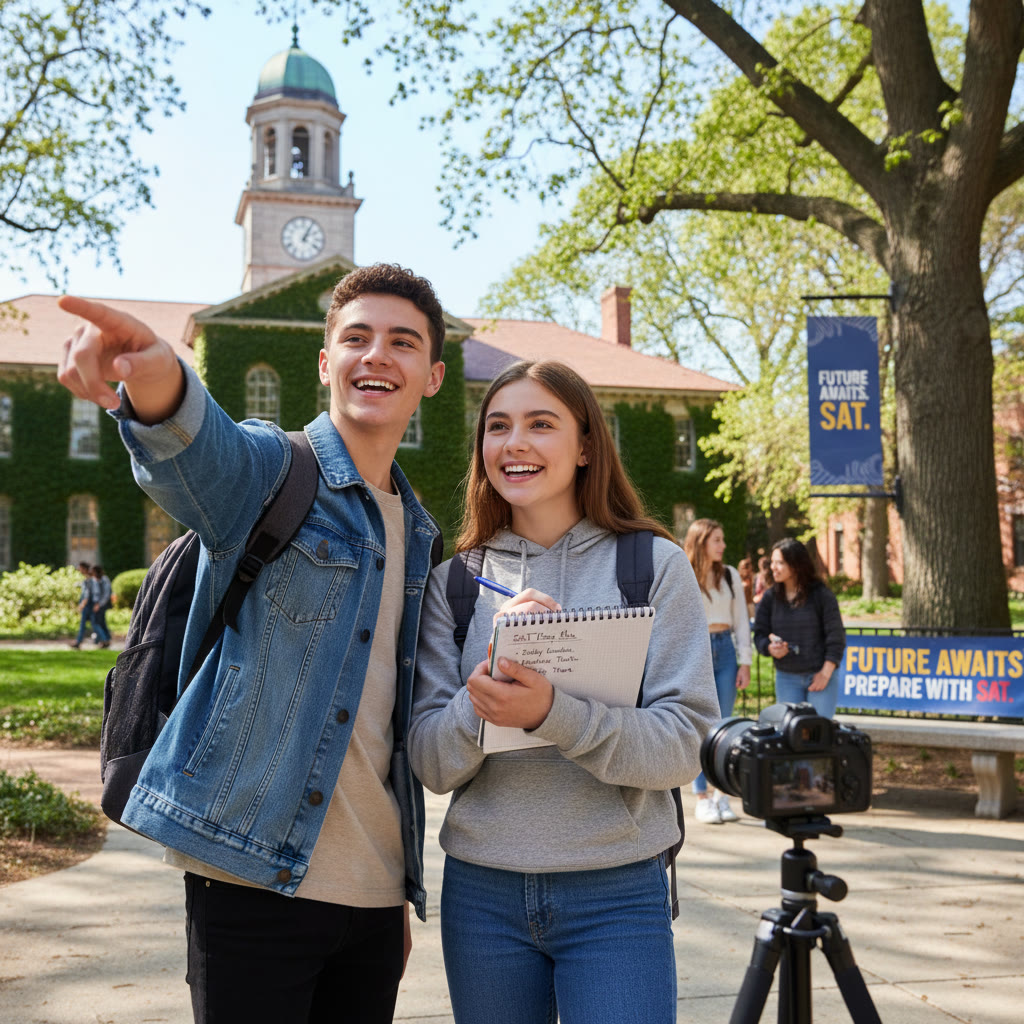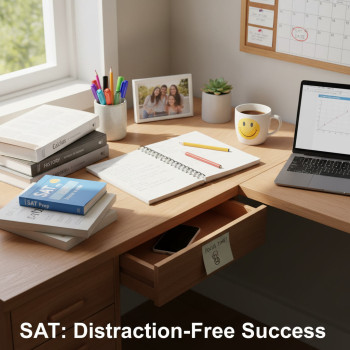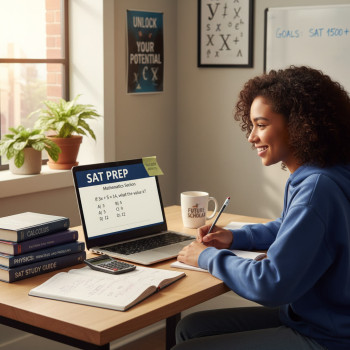Quick answer up front: Does UCLA require the SAT?
Short version: No — UCLA does not require SAT or ACT scores for undergraduate admissions. If you’re planning, breathing, or Googling late at night about whether a Digital SAT score will make or break your UCLA dream, relax a little: the University of California system and UCLA evaluate applicants using a holistic review that emphasizes coursework, grades, essays, and context. That said, the SAT can still be useful in certain situations. This post will walk you through exactly how the SAT may fit into your plan, what UCLA does prioritize, and how to build a compelling, competitive application — whether you take the Digital SAT or focus your energy elsewhere.
Why this matters: the landscape around standardized testing
The last several years reshaped how colleges use standardized tests. Many universities moved to test-optional or test-blind policies, and public systems (including multiple University of California campuses) revised their practices in response to fairness, accessibility, and changing admissions priorities. For students and families this means two practical realities:
- You don’t automatically need a high SAT score to apply to top public universities like UCLA.
- But you still need to demonstrate academic readiness and intellectual curiosity — with or without a test score.
Thinking clearly about where the SAT fits into your unique profile will save energy and help you focus on what actually moves the admissions needle.

How UCLA evaluates applicants (the core elements you should care about)
UCLA’s admissions are competitive because the applicant pool is academically strong and diverse. While the SAT is not required, the admissions committee still looks closely at a few fundamental areas. Think of these as the main chapters of your application narrative:
- Academic curriculum and rigor: The classes you choose (AP, IB, honors, or advanced electives) and how you challenge yourself matter more than a single test score.
- Academic performance (GPA and grade trends): Consistency and upward trends are powerful. Admissions officers contextualize grades (course load, school offerings, local environment).
- Personal insight essays: These are your chance to show voice, contribution, resilience, and curiosity — elements that numerical measures can’t capture.
- Extracurricular depth: Sustained involvement and leadership in a few meaningful areas beat a laundry list of superficial activities.
- Contextual factors: First-generation status, socioeconomic background, significant responsibilities, or hardships are taken into account.
Where the SAT fits in
Because UCLA does not require SAT scores, submitting one is optional. Reasons you might still choose to submit a Digital SAT score include:
- To strengthen academic context if your high school’s grading is known to be inconsistent or unusually harsh.
- When you believe a strong score will complement other academic evidence (e.g., rigorous courses with slightly lower grades).
- For certain scholarships, honors programs, or external opportunities that still accept or request standardized test data.
Conversely, skip sending scores if they don’t help your story — a weak score won’t be helpful and won’t hurt you more than omission in a test-optional environment.
Practical checklist: Should you take the Digital SAT? A decision guide
Here’s a quick-response checklist to help students decide whether to register for the Digital SAT.
- Take the test if:
- Your school record is excellent but you want another, standardized datapoint to confirm readiness.
- You’re applying broadly to schools beyond the UC system that still value SAT scores.
- You can realistically prepare and raise your score meaningfully in the available time.
- Don’t take the test if:
- Your grades and course rigor already tell a strong story and you’d rather invest time in essays, projects, or meaningful extracurriculars.
- You would need only a small improvement to reach your target but don’t have time to prepare well — stress and rushed testing rarely help.
How to make a test decision with evidence
Try a practice Digital SAT diagnostic under conditions similar to test day. If your practice score is within range of a competitive profile AND you can raise it with a reasonable study plan (6–12 weeks of focused prep), it’s worth pursuing. If diagnostic testing shows the SAT will require months of extra work with marginal gains, channel that time instead into essays, academic projects, or local leadership — those have high ROI for UCLA.
What matters more than an SAT number — components that move the UCLA needle
Since test scores are optional, focus where the admissions office actually spends its time:
- Course selection: A pattern of intellectual curiosity — advanced math and science if you’re into STEM, advanced humanities/electives for arts and social-sciences applicants — signals readiness.
- Grade performance: A strong unweighted GPA with evidence of tackling hard classes shows grit and capability.
- Personal insight essays: Craft essays that reveal a distinct voice, growth, and specific contribution you’ll bring to campus.
- Extracurricular impact: Depth > breadth. Highlight lasting projects, measurable impact, and leadership roles.
- Letters and recommendations (when permitted): Some programs ask for teacher recommendations — use them to add color and context about your academic character.
Actionable timeline: A suggested 12-month plan for juniors & seniors
This table shows a pragmatic timeline that balances Digital SAT prep (if you choose to take it) with the essential work UCLA values most.
| Month | Primary Focus | Key Actions |
|---|---|---|
| January–March (Junior year) | Explore & baseline | Take a Digital SAT diagnostic; map AP/IB/honors schedule; start a journal for essay ideas; identify 2–3 meaningful activities to deepen. |
| April–June | Sharpen academics & plan | Set a study schedule if taking SAT; seek summer research, internships, or community projects; draft essay themes. |
| July–September (Senior year prep) | Practice & polish | If testing, take the Digital SAT or sit for a retake; request teacher rec letters if needed; refine essay drafts; complete any required applications for specialized programs. |
| October–November | Finalize & submit | Finalize UC application (opens August–October window varies by year); proofread essays; confirm submission of any optional test scores if they strengthen your profile. |
| December–March | Follow-up & decisions | Submit updates (grade changes, awards), prepare for campus interviews if any, and review financial aid/scholarship materials. |
Practical prep advice for the Digital SAT (if you decide to take it)
The Digital SAT has a specific feel: shorter modules, adaptive sections, and an interface you’ll use on test day. If you take it, prepare strategically:
- Use official practice tests that match the digital interface and time conditions.
- Prioritize practice in the question types that challenge you most — for many students, evidence-based reading and problem solving in math require different study modes.
- Simulate full digital test sessions to build stamina and comfort with the testing app.
- Review mistakes actively: write down the thought pattern that led to the error and fix the underlying misconception rather than just redoing similar problems.
If targeted, efficient prep is appealing, consider 1-on-1 coaching. Personalized tutoring — like Sparkl’s tailored study plans and expert tutors — can help you focus on the high-leverage skills that move your score and, more importantly, your confidence. Combining human guidance with AI-driven insights (practice performance analysis, targeted drills) can accelerate improvement without burning out your schedule.
How to present your application when you don’t submit SAT scores
When you omit a test score, the rest of your materials carry extra weight. Here’s how to strengthen those areas:
- Narrative clarity in essays: Use the personal insight questions to tell a cohesive story: what motivates you, what challenges you’ve overcome, and how you’ll contribute to UCLA’s campus.
- Academic enrichment: Share independent projects, research, or coursework beyond school offerings to demonstrate initiative and curiosity.
- Impact statements in activities: For each activity, be specific about outcomes, leadership, and growth — numbers and concrete examples help.
- Contextualize grades: If your transcript alone doesn’t tell the story (e.g., juggling jobs, family responsibilities), use the application’s space to explain succinctly and honestly.
Sample “strengthening” checklist — one page to review before submission
- Transcript accurately reflects course rigor and upward trends.
- Essays answer the prompt and reveal a distinct voice and growth arc.
- Activities list centers around 3–5 meaningful commitments with clear impact.
- Any optional test score you plan to submit actually strengthens your academic story.
- All application sections are proofread by at least one trusted reader (teacher, counselor, or tutor).
Special situations: transfer applicants, international students, and scholarships
Different applicant groups have special considerations:
- Transfer applicants: College coursework and GPA often speak louder than any test score. Demonstrate readiness for UCLA’s academic environment with solid college-level grades and letters if allowed.
- International students: Some programs or scholarships may request proof of English proficiency or standardized measures. Check program-specific requirements carefully and plan tests only when required.
- Scholarships and honors programs: Certain scholarships may still accept or request SAT scores. If a score strengthens an application for a merit-based opportunity, it can be worth submitting.
Real-world examples: two applicant profiles and what helped them stand out
Example 1 — “Maya, STEM-minded student”: Maya didn’t submit an SAT score because her transcript showed A’s in AP Calculus, AP Physics, and advanced lab research she completed at a local university. Her essays focused on a summer research project that led to a community workshop teaching younger students coding basics. Admissions officers saw a clear academic trajectory and community impact.
Example 2 — “Luis, first-generation applicant”: Luis’s school doesn’t offer many APs and his GPA was solid but not class-topper. He took the Digital SAT and posted a score he felt confident about, then used his application essays to explain how he balanced family responsibilities while maintaining academic focus. The combination of context, an evidence-based test score, and meaningful essays gave a complete picture.

How parents can support without micromanaging
Parents are a critical part of the journey — your support, perspective, and resource-scouting are invaluable. Helpful roles include:
- Providing emotional encouragement and a calm planning environment.
- Helping to set realistic timelines and checklists.
- Connecting students to resources (school counselors, tutoring like Sparkl’s personalized options, summer opportunities).
- Reviewing essays for tone and clarity but letting the student keep the voice and final ownership.
Avoid turning applications into perfection projects: admissions teams want authentic students, not polished replicas of parental ambition.
Final thoughts: the smart, balanced approach to UCLA admissions
UCLA doesn’t require the SAT, but the core truth remains: admissions committees are searching for intellectual curiosity, demonstrated achievement, growth, and distinct contributions. Whether you choose to submit Digital SAT scores or not, prioritize depth over breadth in your activities, craft essays that reveal authentic growth, and present your academic record in context.
If you’re unsure how to allocate your time — more test prep or more project work? — consider a short consultation with a specialist who can look at your transcript, practice test results, and extracurricular record. Personalized tutoring and planning, such as Sparkl’s 1-on-1 guidance and tailored study plans, can help map an efficient path that respects your schedule and mental health while maximizing outcomes.
Quick reference: What to do next (a condensed checklist)
- Run a Digital SAT diagnostic under test-like conditions to inform your decision.
- Map your senior year course load to ensure academic rigor and balance.
- Draft essay themes early; revise with feedback but keep your voice.
- Deepen 2–3 activities rather than adding many shallow ones.
- If submitting an SAT score, ensure it clearly strengthens your story — otherwise, focus elsewhere.
- Consider targeted support (tutoring, essay coaching) for areas with the highest potential impact.
Last encouraging note
Applying to UCLA can feel like aiming for the summit — thrilling, a little scary, and absolutely achievable with thoughtful planning. Your application is a story only you can tell: focus on the parts that demonstrate who you are and what you’ll bring to a vibrant campus community. Whatever path you choose with the Digital SAT, make it intentional. You don’t need every badge; you need a clear, honest, compelling narrative matched by evidence. Take it one step at a time, ask for help when it clarifies your direction, and remember that colleges are looking for people, not perfect scores.
Good luck — and when you want a targeted plan or a disciplined but compassionate study partner, consider reaching out to a trusted tutoring service that offers 1-on-1 guidance, tailored study plans, expert tutors, and AI-driven insights to track your progress.















No Comments
Leave a comment Cancel